People who eat crabs need a strong heart: the twists and turns of a player tossing a PCIE SSD
Hard drives have long been regarded as the bottleneck that limits the overall performance of the PC. In order to further improve the data transfer rate of the hard disk interface, the SATA interface has gradually replaced the old PATA interface since 2000, and has developed into the most widely used hard disk access port at present. The SATA interface evolved from the original SATA 1.0 to SATA 3.0, and the interface speed also increased from the earliest 1.5Gb/s to the current mainstream 6Gb/s. However, the speed increase of traditional mechanical hard disks has basically reached the limit. Even if the highest-end mechanical hard disks are currently unable to compare read/write speeds, especially random 4K read/write speeds, with low-end solid-state hard disks, solid-state hard disks have also become popular. The new darling. With the continuous soaring of the performance of SSDs, the theoretical transmission rate of only 6 Gb/s for SATA 3.0 interfaces has become an obstacle to the performance of SSDs. Therefore, many manufacturers have introduced PCIe SSDs. However, due to the limited number of PCIe channels on the motherboard chipset and the fact that PCIe SSDs are often very expensive, PCIe SSDs have not been popularized. With the dramatic increase in the number of PCIe channels on the Intel Skylake platform and the continued reduction in PCIe SSD prices, the addition of PCIe SSDs has become a new hobby for high-end players. Before I have played intel 750 and Samsung 950 PRO, performance is leveraged, compared to ordinary SATA SSD is really the feeling of shotgun for guns, the recent Plextor PCIe NVMe SSD new flagship M8PE listed in Taiwan, I also speed Let friends bring two pieces back to me, a m.2 interface, a PCIE interface, to see if the new flagship can do intel 750 and Samsung 950 PRO, and share the twists and turns of my frustrating PCIE SSD in recent years. .

★ PCIe SSD interface ★
The PCIe SSD mentioned here is not specifically referring to a solid-state drive that uses a PCI-E interface, but rather refers to a solid-state drive that exchanges data with a CPU through a PCIe channel. The interface of the PCIe SSD may be the PCIe traditional interface, which is similar to the card-type plug-in card. It may also use the M.2 or U.2 interface. The shape and size of the PCIe SSD are similar to those of the ordinary U-disk. PCIe SSD is called PCIe SSD, the key is whether to use native PCIe or bridging master, which determines whether it can take the PCIe bus. Another PCIe SSD product is a PCIe SSD with an M.2 interface. The PCI-E riser card is inserted into the PCI-E slot to connect to the motherboard and be fixed.
★ into the pit article ★
I started with Micron's SSDs. I have been using the classic M4 128G+256G for several years. When I replaced the ASUS M6E motherboard in 2014, I discovered that there was an m.2 interface on the motherboard. At that time, the m.2 interface estimated nothing. People know that I have always been keen on chasing fresh and eating crabs. I quickly searched for SSDs with the m.2 interface. At that time, only the Plextors had a model number of M6e. The price of 256G was 1799 yuan. It now appears that It was astronomical, but it was black technology at the time. However, only after the initial discovery of the original m.2 interface SSD length, M2e is 2280, but the Asus M6E motherboard can only support the specifications of 2240, playing this share is already pit, and I must be life and death Experience black technology how fast, no way can only add money for the M6e 256G PCIE interface, 1999 yuan, more than a version of the m.2 interface version of a PCIE converter card, even if there is no m.2 interface on the motherboard Can be installed on the PCIE interface. At the time, I was guilty. I had to play with big ones, and I had two RAID 0s. Sad reminder, to be the first person to eat crabs properly requires a strong heart, only to find out after the machine, PCIE interface SSD can not be found in the BIOS, not to mention set to RAID0. No way, you can only set up a soft RAID0 in the windows system, which means that you cannot install an operating system on this two-speed PCIe M6e group RAID0 monster. Although some regrets, but still a cool one. The two disks later sold one, leaving an operating system installed. In order not to compete with the graphics card for the PCIE channel, I installed the M6e on the PCIE X4 interface and used it for now.
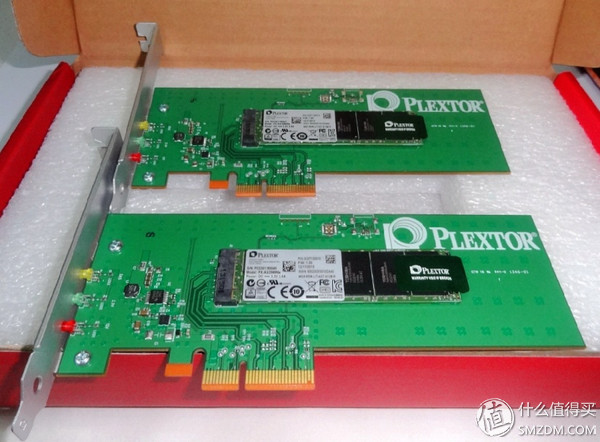
(The previous generation of PCIE SSDs that did not support NVMe - Plextor M6e)
★Nice heart ★
After the Plextor M6e, I also started with Lite-On's CX1 and Samsung's XP 941. These are all initial PCIE SSDs and can only take shape, that is, they are faster than regular SATA SSDs in terms of continuous reading and writing speed. However, the advantage of random 4K performance is not obvious. The reason for this is because these PCIE SSDs do not support NVMe. NVMe is a new standard required for the control of the new generation of mid-to-high-end native PCIe SSDs. It is a specification that is more applicable to SSDs than AHCI. Traditional mechanical hard disks rely on magnetic heads to read and write data, so the read latency is relatively high, especially when reading small files that are loosely stored in various locations on the hard disk. This slows the traditional mechanical hard disks into the bottleneck of system performance. In order to optimize the high read latency of mechanical hard disks, AHCI (Serial ATA Advanced Host Controller Interface) Serial ATA Advanced Host Interface came into being. Under the guidance of Intel, AHCI, jointly developed by AMD, Dell, Marvell, Maxtor, Microsoft, Red Hat, Seagate, and many other companies, allows storage drivers to enable advanced serial ATA functions, such as AHCI's unique NCQ technology. Targeting the seek time is reduced to optimize the mechanical hard disk. Compared to the old IDE mode, AHCI can improve the overall performance of mechanical hard drives by about 10-30%. However, the working principle of SSD is completely different from that of mechanical hard disks. The former uses electrical signals for storage, and the storage medium used is a silicon chip; the latter uses magnetic signals for storage, and the storage medium is a magnetic disk. Therefore, AHCI designed for mechanical hard drives is obviously not suitable for solid state drives. In 2011, the Non-Volatile Memory Express (NVMe) Non-Volatile Memory Standard (NVMe), also known as the NVMe specification, was officially launched, which was specifically proposed for NAND flash memory and next-generation storage devices. It is developed specifically for the characteristics of flash memory, and its purpose is to minimize the gap between the storage system and the memory bandwidth. The current standard is NVMe 1.2.
Therefore, PCIE SSDs that do not support NVMe cannot actually perform their performance advantages. Therefore, after replacing the Z170 motherboard, I quickly started the intel 750 and Samsung 950 PRO, but the driver under win7 is not perfect, especially when installing the operating system, all kinds of irritability (you can ask Du Niang, and I There is a lot of people who are as annoyed.) It wasn’t until both Intel and Samsung introduced drivers that they really experienced the benefits of NVMe.
★ Unpacking ★
With the experience of tossing several PCIE SSDs that support NVMe before, I was more than happy. People who eat crabs say plainly that they are cannon fodder and sum up experience for future generations. This time starting with the Plextor M8PE, it is intended to eat crabs in the end. The 256G version of the m.2 interface was first sunk and the 512G version of the PCIE interface was left behind. M.2 interface M8PE packaging uses a black theme, the bottom left corner of the box actually indicated that does not support laptop computers, this statement is actually not accurate, as long as the laptop can install 2280 specifications of the m.2 interface SSD, it should The same can be used. Do not understand how the manufacturer engages in this annotation.
Product Link (because the product is not yet on the mainland, the link is Taiwanese electricity supplier):


The back of the box indicates the speed reference value of the M8PE series of different capacity versions. It can be seen that the continuous read and random 4K performance of the 128G version is much higher than that of the SATA SSD, while the random 4K read and write performances of the 256G and 512G versions are both Can be in line with Intel, Samsung's flagship product. So I chose 256G and 512G version is still very wise.
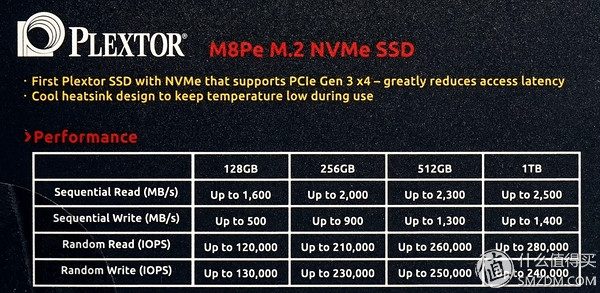
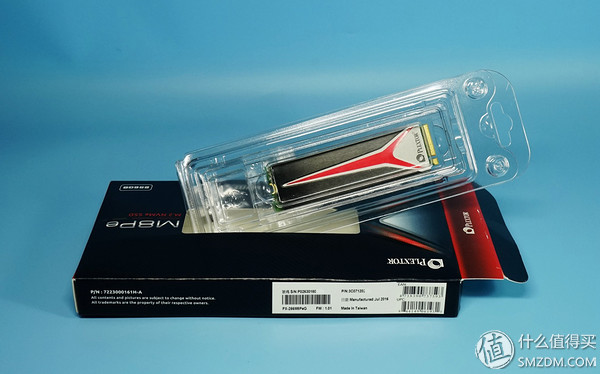
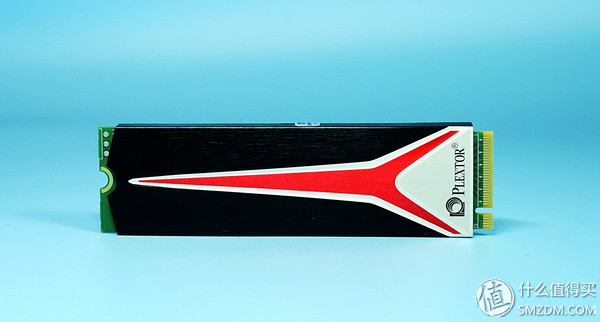
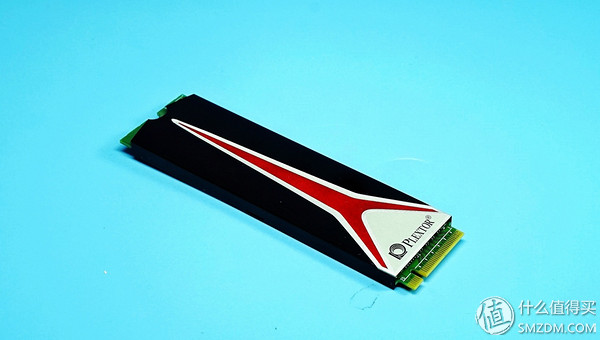

The biggest difference between M8PE and Plextor’s previous m.2 interface SSDs is the increase in heat sinks. I do not understand whether this means that the M8PE will generate much more heat than previous products, but from the perspective of product protection From the point of view, adding heat sinks is good. Judging from the information on the official website of Plextor, the M8PE also has a version without a heat sink, but the parameters and the version with the heat sink are the same, and it is estimated that the price will be a little cheaper. Another thing is different from the past is that 128G, 256G, 512G different size versions of the cache size is actually 512MB, only 1TB version, expanded to 1024MB.
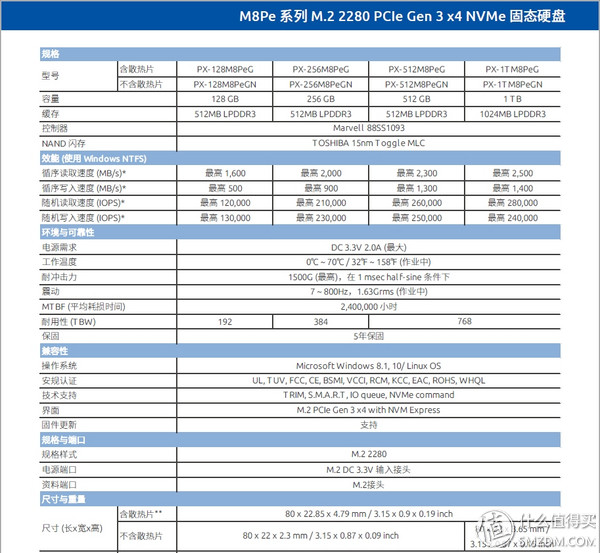
★ Dismantlement ★
The only problem with M8PE's heat sink is that it is harder to dismantle. In accordance with international practice, blow off the warranty label with a hot air blower, and then use a thin screwdriver to gently pry off the heat sink. Between the heat sink and the SSD is sticking together with a sticky heat dissipation paste, just like an ordinary memory vest. There is a player with the experience to remove the memory vest. It is not difficult to remove the heat sink.
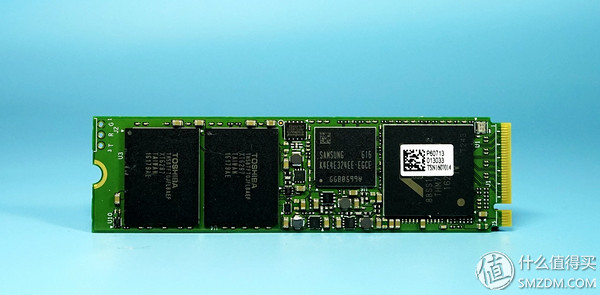
After removing the heat sink, you can see that there is a master chip, a cache particle, and two NAND particles on the PCB.
The main control chip adopts the new generation of PCIe master control 88SS1093 of Marvell, this is a 28 core process technology three core 8 channel main controls, supports 8CH/8CE, each channel supports 8CE/Die, supports the capacity of 2TB most. According to Marvell's official data, this master controller supports the NVMe 1.1 standard, is compatible with NVMe 1.2, and supports NAND Edge error-correcting and LDPC technologies. Can support three kinds of interfaces such as PCIE X4, M.2, U.2 at the same time. In addition to supporting MLC NAND, 15nm TLC and 3D V-NAND are also supported.
The cache actually uses Samsung's LPDDR3 particles, which is the first time I saw Samsung's cache on Plextor's products. It is numbered K4E4E324EE-EGCE and has a single capacity of 512MB and a frequency of 1600MHz.

(Marvell's native PCIE master 88SS1093 supports NVMe)
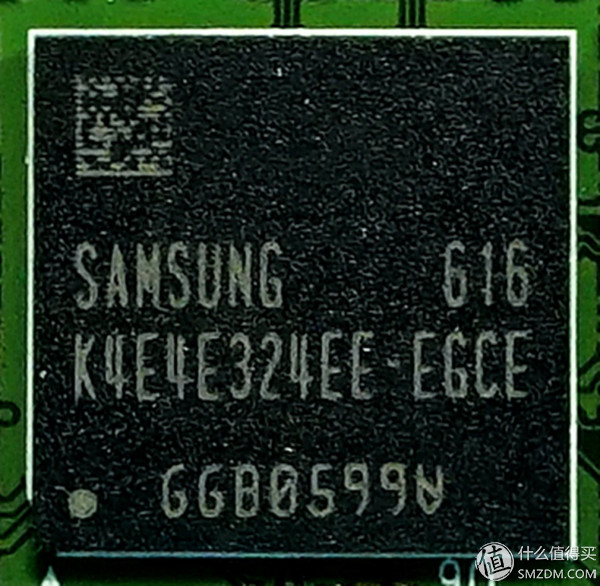
(Samsung's LPDDR3 cache particles)
NAND particle number is TH58TFT0JFLBAEF, from the number point of view, is Toshiba original BGA package Toggle NAND, 15nm MLC, single-capacity 128GB, a total of 2 256G total capacity.
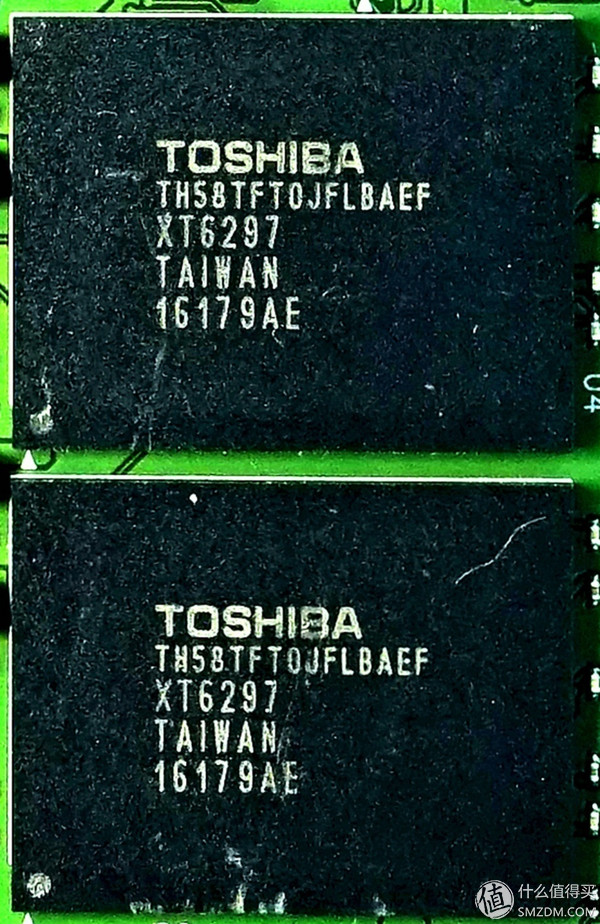
(Toshiba original 15nm MLC NAND particles)
★ Test article ★
1. Theoretical performance testing of conventional software:

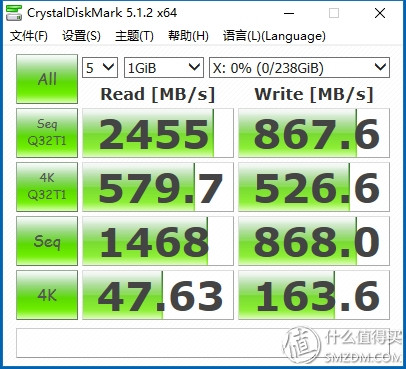
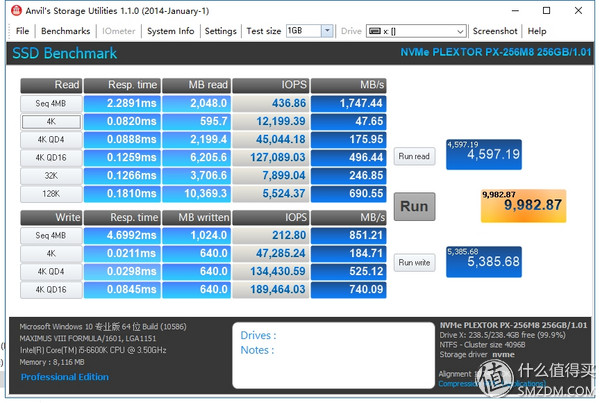


The first is the testing of four SSD general test software such as AS SSD Benchmark, Crystal Disk Mark, Anvil's Storage Utilities, and TxBENCH. The test scores can be described as scary compared to SATA SSDs. Those who have not seen PCIE NVMe SSD running points are estimated to be running out of memory. The maximum continuous read/write speed of the Plextor M8PE reached 2035MB/s and 1040MB/s, respectively, which were higher than the nominal parameters. Random 4K read and write performance is also significantly higher than the various high-end SATA SSD. Continuous read and write speeds can be improved by using SSDs to set up internal RAID 0, but random 4K read and write performance must be achieved through real-world technology upgrades. This is the current PCIE NVMe SSD and the previous PCIE SSDs that rely on internal RAID0. The biggest difference. However, the M8PE's ASS SSD test score is still lower than the inte 750 and Samsung 950 PRO, which are also using the native PCIE master. Fortunately, everyone now knows that the conventional test software does not fully reflect the true performance of an SSD.
2, simulate the actual use of environmental performance testing
PCMARK8 is currently the closest to the actual use of the environment of the simulation test software, which the storage device testing part of the game, office, graphics processing and other items, the test data volume reached about 50GB, so PCMARK8 test results than previous routine test items It can truly reflect the actual performance of the SSD. More specifically, it is the comprehensive performance of the SSD under ordinary home, games, and small SOHO use environments. However, because the test time of PCMARK8 is more time-consuming, it usually takes more than one hour, so it is not as popular as ASS SSD. Just like a rookie likes to use a large wet video card, using ASS SSD to measure SSD is very incomplete, but that is what people like to see.

Test results summary:
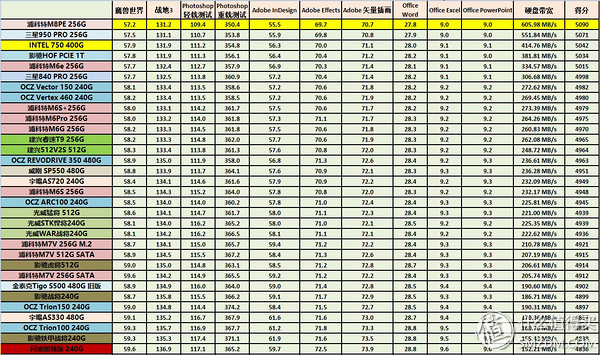

The final score of the M8PE 256G PCMARK8 storage device test was 5090. Although it was not far beyond my expectations, it also surprised me. Because PCMark8's score should be in the range of 5030-5040 if it is predicted from the score of ASS SSD. The score of 5090 points has surpassed Samsung's 950 PRO and intel 750. It is the highest-rated PC SSD8 consumer SSD product I have seen so far, and even exceeds the Plextor M6S+ that uses Plex Turbo technology to increase the performance by using memory as cache. .
Comparing scores of conventional test software such as ASS SSD and PCMark8 test scores, it can be seen that on PCIE NVMe SSD, scores of conventional AS SSD Benchmark, Crystal Disk Mark, Anvil's Storage Utilities, and TxBENCH test software are even more difficult to truly reflect SSD The overall performance, AS SSD Benchmark scored more than 3,000, ranked first intel 750 400G in the PCMARK8 test can only be ranked in the PCIE NVMe SSD inside the lower level. The Samsung 950 PRO and Plextor M8PE, which scored low on the AS SSD Benchmark, successfully completed the counterattack in PCMARK8, and their test scores were significantly better than the intel 750. The group's main control of the use of GALAXY HOF, still unable to get rid of the old faults of the group leader: continuous reading and writing the top, the actual performance of the software.
I would also like to try using Plex Turbo technology to test how M8PE performance can be improved. The result was that M8PE did not support Plex Turbo and did not specify Plex Turbo on the box. It is estimated that Plextor thinks that the performance of the M8PE is strong enough that there is no need to use Plex Turbo. When I use the cracked version of PlexTurbo, try again.
★ chief life home perspective ★
I. The advantages and disadvantages of Plextor M8PE:
1. Advantages: The overall performance is strong. PCMARK8's test performance exceeds that of the intel 750 and Samsung 950 PRO, and the cost performance is higher.
2. Disadvantages: Still can not be identified in the BIOS, so it is impossible to build a hardware RAID. There is still no software for Secure Erase, and the Secure Erase feature on the ASUS motherboard cannot be used. Although there is a tutorial on Secure Erase using Naraeon NVMe Tools on a Linux system on the Internet, the process is cumbersome and we can only expect Plextor to improve on the new version of Plextool.
Second, the purchase proposal:
1. With the dramatic increase in the number of PCIe channels on the Intel Skylake platform, and the continuous improvement of PCIe NVMe SSD products and continuous price reductions, it can be said that the timing of the current PCIe NVMe SSD is basically mature (NVMe driver improvement is a key The installation system is no longer annoyance is one of the necessary conditions to start PCIE NVMe SSD).
2. The previous generations of PCIE SSDs such as Samsung XP 941 and Plextor M6e did not support NVMe, so the actual performance compared to high-end SATA SSDs did not actually change. If you want to buy, you should choose the latest product that supports NVMe. Although expensive, but expensive.
3, GALAXY, Sotec and other manufacturers have launched PCIE NVMe SSD products based on group hosting, but in addition to continuous reading and writing performance, the performance in practical applications is not much larger than those products that do not support NVMe. Increased, and the price is not cheap, not worth buying. Currently, the PCIE NVMe SSD products that really deserve attention are actually only three models: the intel 750, the Samsung 950 PRO, and the Plextor M8PE. From a comprehensive performance point of view, the intel 750 disappointed me a lot. The inconspicuous Plextor M8PE was the strongest. At present, the price of the intel 750 400G is close to 2,000 yuan. The price of the Samsung 950PRO 256G is about 1,499 yuan, while the price of the Pukoute M8PE 256G is 5,999 TWD, equivalent to less than 1300 yuan, so the price/performance ratio is obviously higher and worth buying. However, not every user has a channel to purchase from TW, so the actual market price in mainland China is also a key factor to consider cost-effectiveness.
4. At present, many high-end SATA SSDs, 240-256G version price is still 900 yuan, compared with the same capacity of PCIE NVMe SSD, the price is obviously at a disadvantage, it is not worth considering. So the next market may be polarized, the high-end market is divided by the PCIE NVMe SSD, high-end SATA SSD either cut prices to the mid-market or delisted, while the low-end market is completely occupied by the TLC SSD.